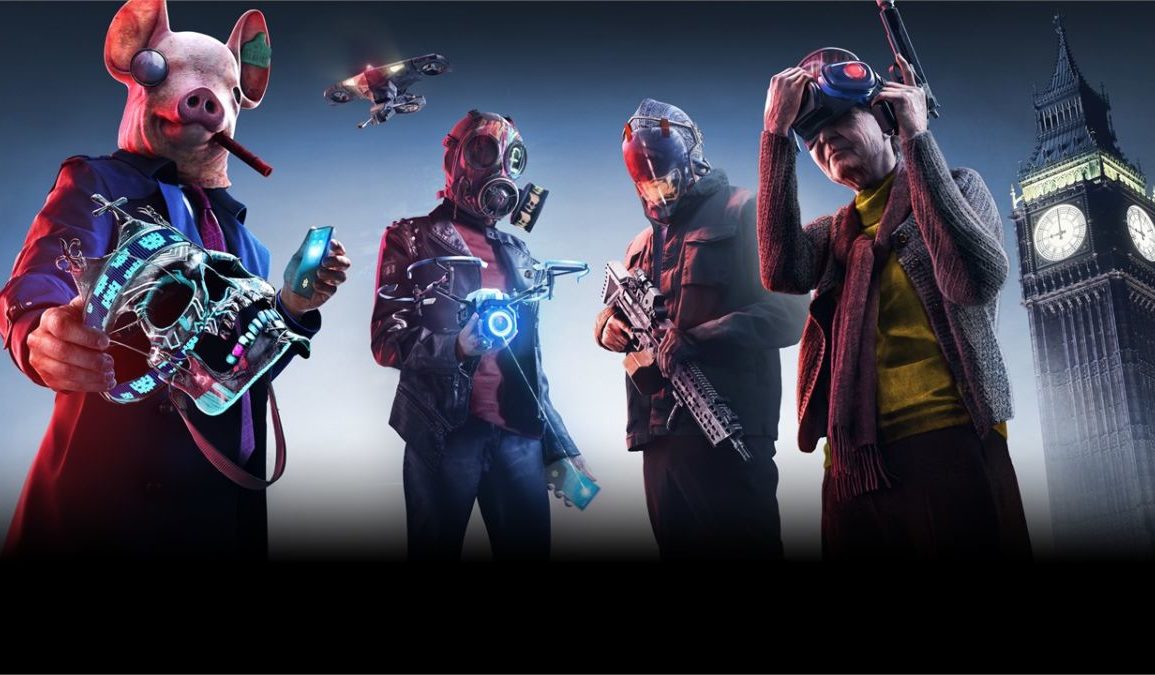
I don’t think Ubisoft could have possibly predicted the political climate that Watch Dogs: Legion, the third instalment in the franchise, would be released in. The themes present in Legion are overtly political, so anyone looking for pure escapism from the real world, especially those in the UK, may not find it entirely here. Make no mistake, Legion is an anti-fascist game, but does the gameplay itself offer more than just a strong message?
Dropping you into the prologue in James Bond-esque fashion, Watch Dogs: Legion introduces you to the activist hacker group DedSec, or at least the British arm of it. An attempt to foil an explosive plot at the Houses of Parliament by the rogue terrorist group ‘Zero Day’ goes awry and, when bombs go off around London, DedSec is blamed and forced to go underground. Soon after, the British Government hires a private militia group, Albion, to police the city, leading to political and social unrest in the capital.
You can count on one hand the number of connections to the previous two Watch Dogs games. The most obvious difference is that Legion puts you in the cyber-shoes of not one but a whole host of characters this time around. Starting with one character you select from a seemingly random choice, your job is to slowly but surely recruit more and more into your ranks.
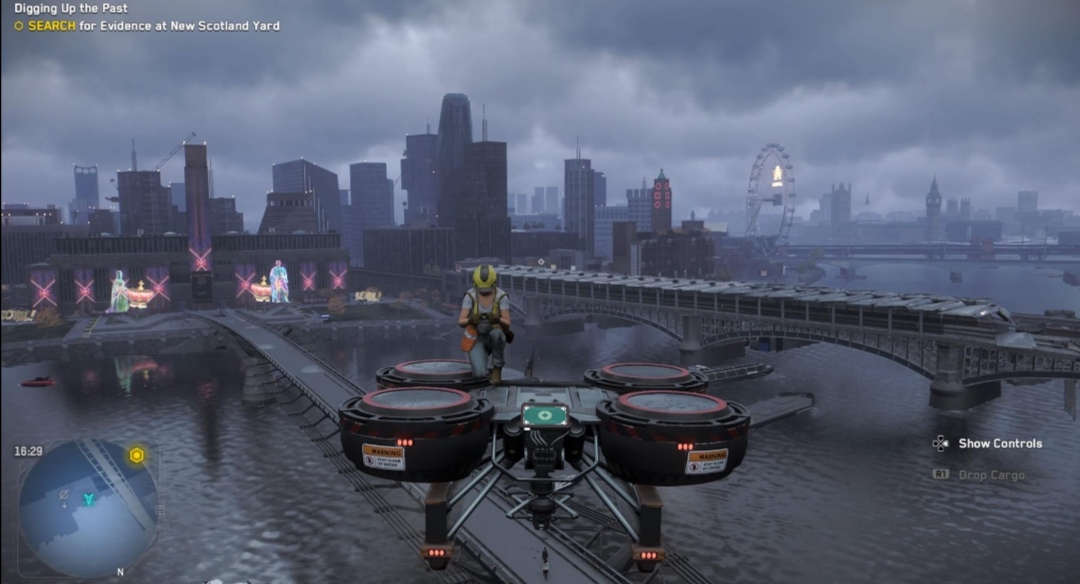
As your numbers grow, so does your access to further skills and perks. Each new member has their own strengths to be utilised, such as quicker hacking times, uniforms (helping you be detected less quickly in certain restricted areas) and unique weapons, to name but a few. Just about anyone can be recruited by speaking with them, usually triggering a side-mission to complete before they join the organisation.
Soon enough, higher-skilled folk will appear on the world map, such as those with higher healing abilities and others with access to drones or better weaponry. One ‘perk’ I noticed a few times was that some characters could spontaneously die. Genuinely. Make of that what you will. Another was that someone had no stealth ability as their flatulence would alert guards.
It was initially quite fun to bring folk into DedSec, but their apparent usefulness soon deteriorated. Despite it being a fun gimmick, almost like a human Pokemon collection you can grow, I only ever needed two or three operatives, at most, as long as I had a spider-bot and/or access to a cargo drone to take me to higher areas. With this in mind, it also means there’s no real connection you can form with the playable characters. The only way I can see you truly caring what happens to them is if you turn on ‘Permadeath’ mode, in which if your DedSec hacker dies, they are gone for good.
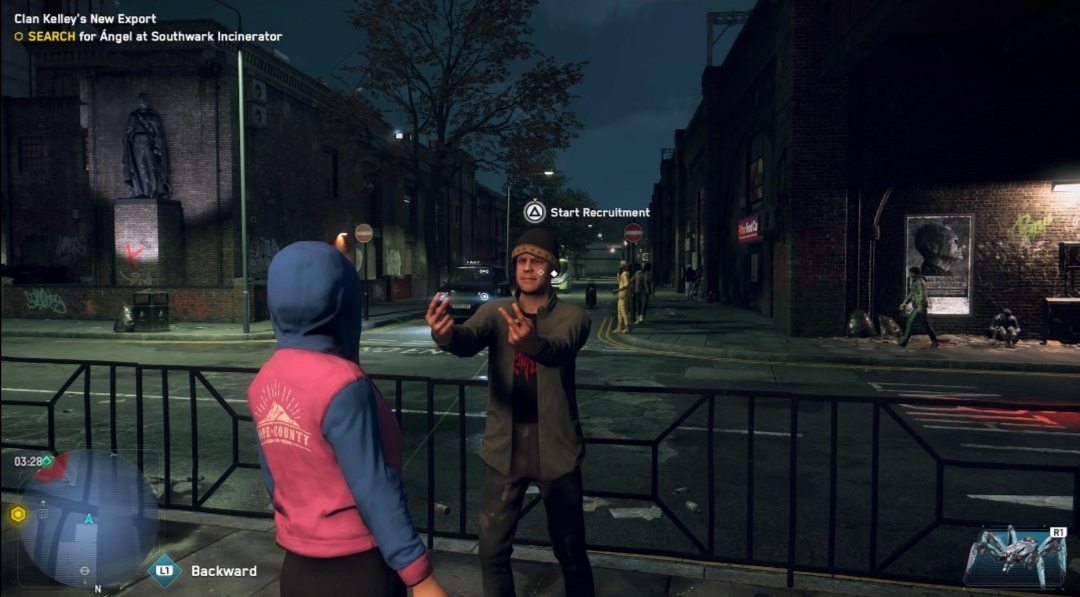
Something I did also notice is that by scanning the people of the world, you can see if they have thumbs up or down. Legion never explicitly tells you about this, but you can gather extra information on potential recruits. Too many thumbs down can mean you’ve wronged this person in the past, you’ve beaten them up if they were a guard, for example, meaning they’ll be harder to recruit. On the flipside, a thumbs up can mean that you’ve helped them earlier, or even a friend/relative of theirs. It’s a nice touch that adds a sense of importance to your wider actions.
One of my gripes with the playable characters and NPCs is the voice acting. Although their appearances and voices do largely seem to be randomised, I found more often than not that if you closed your eyes, you genuinely wouldn’t be able to tell the difference between the person you’re playing as and the person you’re speaking to. The very same voices can often be heard around the city, with some that have simply had the vocals slightly changed via modulation, which was a little jarring. The lip sync could also do with some work. More often than not, the voice just does not seem to match with the character, rendering NPCs and others difficult to buy into.
I did encounter one dialogue exchange where two characters were talking but having very different conversations. My character was chatting about the mission that had just been completed, while the other he was speaking with was just shouting at someone off-camera. It didn’t make any sense and really took me away from the experience.
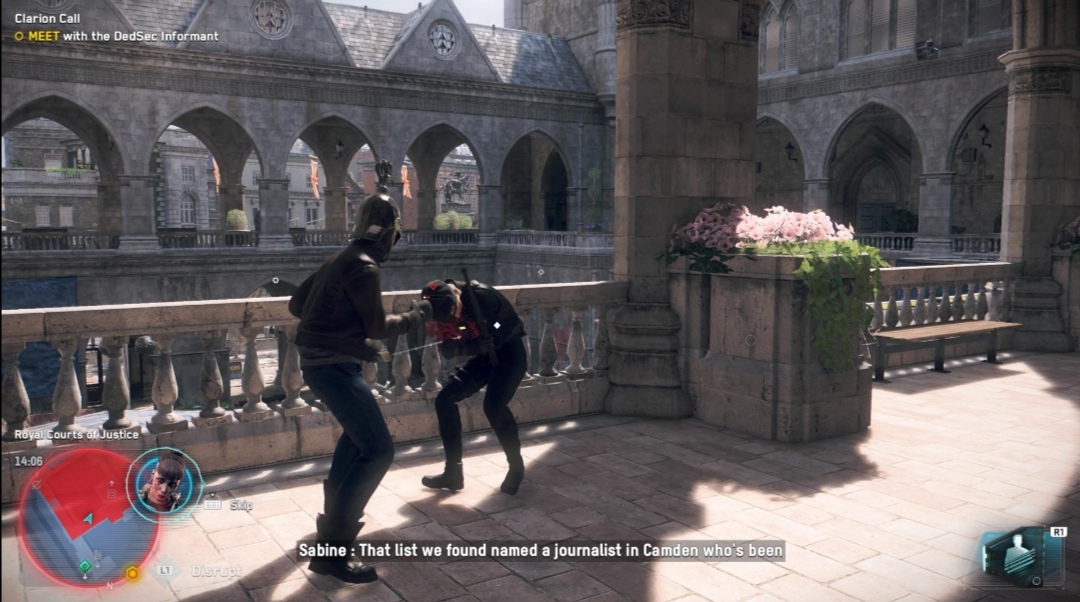
While I fully appreciate that Legion involves DedSec and the residents of London coming together to overthrow their oppressors, I do wish that some of the London-centric dialogue wasn’t so on the nose about it – discussing the benefits of the townsfolk hearing Big Ben’s bongs for a solid minute is a little grating. Honestly, there are so many similar characters, most of them feel pretty bland, as does Sabine, the DedSec leader.
Sabine has a very dull tone throughout Legion and her presentation is underwhelming. The major saving grace is DedSec’s AI, Bagley. He’s the wise-cracking, smart-arsed and funny companion throughout your time in Legion and the game is much better for it. Similarities to Stephen Merchant’s Wheatley in Portal 2 are bound to come to mind, but fortunately, Bagley isn’t a complete rip-off. Similarly, Legion’s main antagonists also manage to pick up the slack as the game progresses.
The wider map of this near-future London is instantly recognisable, although slightly compressed, much like San Francisco in Watch Dogs 2. Landmarks such as Buckingham Palace, The London Eye and The Shard are all there, at odds with the drones and self-driving cars below. After getting the headquarters back up and running (based under a pub, because of course it is), the entirety of Legion is available to explore.
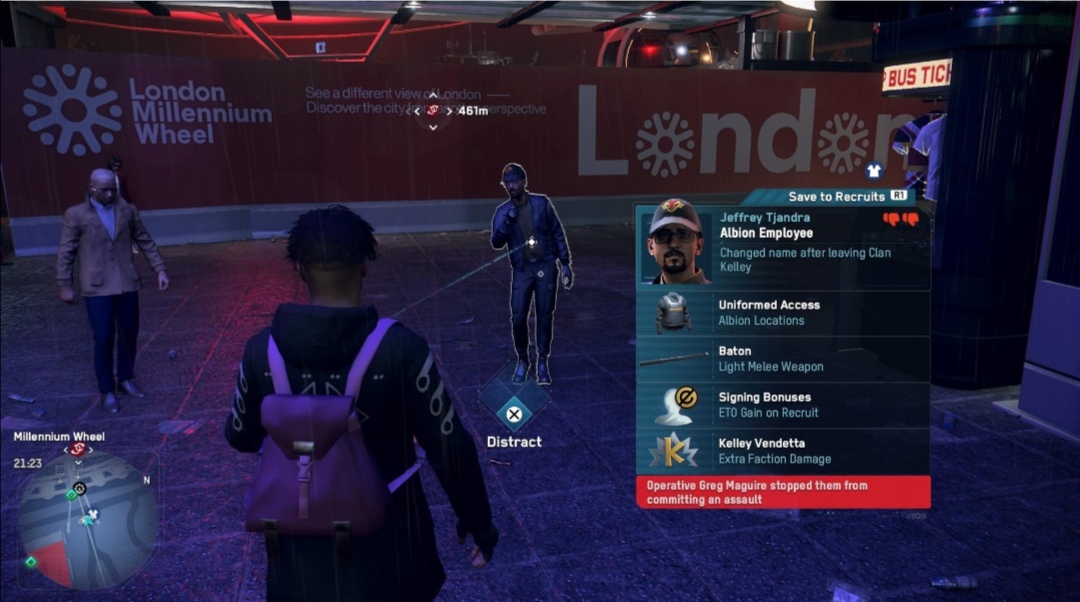
You can fast travel using the London Underground, providing you have revealed that particular station on the map. It soon becomes the most convenient way to travel as driving in Watch Dogs: Legion is clunky at best. The steering felt overly sensitive and made it way too easy to crash. The only upside is that not many of the missions actually require you to drive, so this felt fairly under-utilised, for better or worse.
London is separated into eight boroughs, all of which can be liberated by completing certain missions such as tagging buildings or hacking servers. These, in turn, lead to one final mission which then frees that district. The Tech Points in the district will then all be revealed for you to find.
This brief description does also relate to much wider issues with the missions in Watch Dogs: Legion – they’re very repetitive, a complaint I’ve had with previous games.
Although there is some slight variation here, the basic structure of all the missions largely remains the same:
– Go to the location
– Hack a thing
– Leave
After only a handful of missions, I couldn’t help but feel like I’d seen everything Legion had to offer. The main deviation was the parts that required me to pilot the spider-bot or navigate areas with a drone. These offered more puzzle-orientated areas to tackle, breaking up the monotony. The level designs are quite intricate, though, and there is an implied emphasis on using your gadgets to overcome most of the obstacles and guards in your way. You can arm traps, distract guards and disable drones all from your in-game phone by tapping L1 or holding and selecting the options, like ‘hijack’, ‘download’ or ‘disable’, for example. You can also hijack cameras to give you a better scope of the area and see security options you can disable, though you do need to be mindful of nearby guards who will turn these back on. The tech upgrades can and do help, but, as I mentioned earlier, as long as you at least have the spider-bot with you and are cautious, most missions won’t really present too great a challenge.

I found that I could just whip out a gun and shoot my way to success with minimal resistance. There’s also hand-to-hand combat to use that’s fairly basic but does change up the combat. You can strike, counter and dodge, and all enemies need to be finished off once they have fallen to their knees, otherwise they will get back up. Should you need to run away, the free-running style of the previous Watch Dogs is still present here, allowing you to fairly seamlessly hop and climb obstacles.
Thankfully, after the 404 and Skye Larsson storylines further into the campaign, business does pick up. The difficulty of the missions and how you can tackle them opens up, suddenly feeling much more important and exciting to play. It felt like using gadgets in each environment was more critical to my progress and I took a little more care in which operative I would select per mission although, again, if played with enough care and patience, you can get by with anyone.
Much of the joy of the latter missions was getting to meet the baddies of Legion. From ‘Bloody Mary’ to Nigel Cass (effectively Elon Musk, if he was an Eastenders villain), the performances were significantly better than earlier. It actually felt like they were a threat and possessed an importance to the story.

The NPCs, enemy or otherwise, would often behave erratically as well. In combat situations, sometimes they would run around randomly or just climb onto tables or vents without rhyme or reason. NPCs out in the world, too, would just act strangely. I witnessed two cars crash into each other and watched as the characters exited their vehicles. One walked in a circle before running away down the street, while the other just stood still. Likewise, in missions where I had to rescue and escort an NPC, they would struggle to keep up with me, getting stuck on the environment or generally being frustratingly slow. I recall one mission where I had the character follow me out of a police station without incident. When we ended up outside, I held L1 to see what attributes they had, should I look to recruit them. However, an alert under their information said that I had intimidated them before they sprinted away from me.
When not trying to navigate the inconsistency of NPCs or the early repetition of missions, I did enjoy exploring London. While the city presented here does become very samey and a lot of it feels uninviting, it does effectively force you to go out of your way to get Tech Points, signified by thick green diamond icons on your map. Watch Dogs: Legion doesn’t give you any XP or any kind of levelling up system, so all of your upgrades for weapons, tech, combat and hacking are paid for with Tech Points. I appreciated this change in the typical formula as it takes pressure away from the missions, meaning there are basically no consequences for your play style other than potential knock-on effects to your later recruitment of randoms.
The downside is ETO, the in-game currency of Legion, which is basically useless. This is only used to pay for cosmetic items, but these have no functional purpose and zero impact on the gameplay. There are also microtransactions available, but you can only pay for cosmetic items and other playable characters with some apparently useful perks, though I am not entirely certain why anyone would want or need to part with their cash for these.
Watch Dogs: Legion Microtransactions
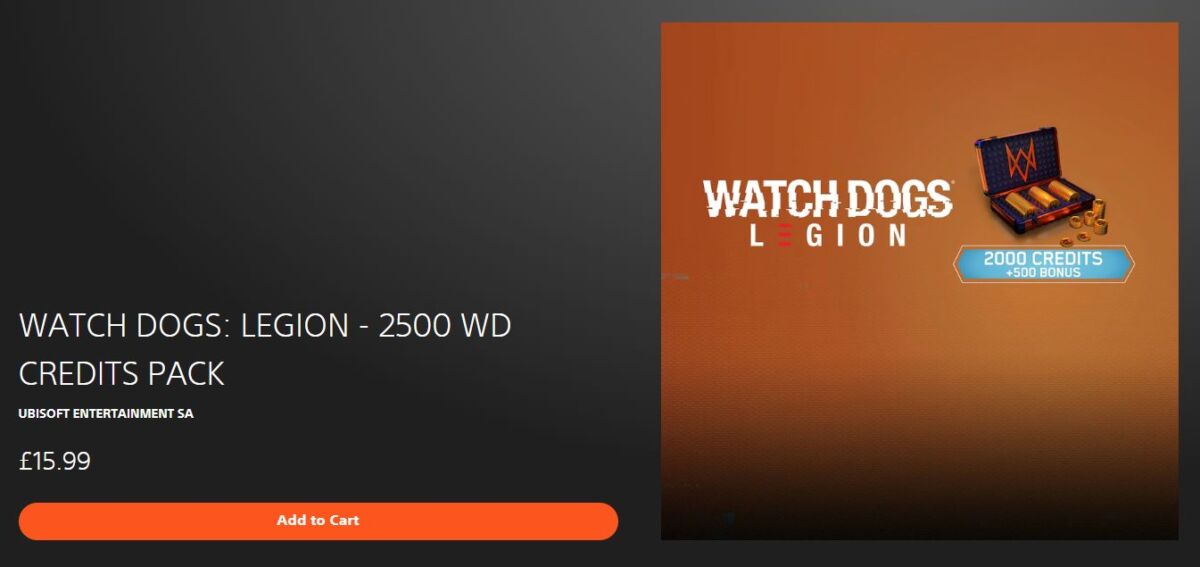
Watch Dogs: Legion features WD Credits, which can be used to purchase cosmetics and new characters. Prices range from £3.99/$4.99 for 500 WD Credits to £39.99/£49.99 for 5000 WD Credits.
You can also pick up ‘data’ in the form of newspapers, podcasts and other collectibles, which offer further backstory and insight into Albion, London and DedSec, as well as other activities like darts and drinking, because Britain.
As a side note, in my time with Watch Dogs: Legion, the gameplay did run smoothly although I did encounter one or two glitches (hair textures covering bodies, enemies I’d beaten falling through walls). Weirdly, though, Legion has crashed every single time I have closed the game down on my PS4 Pro. Hopefully, future patches will address these issues.
Watch Dogs: Legion takes the franchise in an interesting new direction with the ability to recruit and play as (almost) anyone. However, most of the recruitable characters feel fairly vanilla and the voice acting is often sketchy, at best. I do wish there was something in place to make playable characters stand out a bit more, as seeing them die or get kidnapped felt largely inconsequential. Legion just scratches the surface of what’s possible. The map of London, also, is full of detail and potential, even if some areas do feel rather similar to others, but the emphasis on exploration does help keep the world somewhat interesting. However, despite a slow start, repetition found throughout and some technical hiccups, the second half of the 20-25 hour campaign really sees business pick up. Everything begins to feel more crucial and, more importantly, actually fun.
A PS4 key was provided by PR for the purposes of this review.
READ NEXT: The Best PS4 Open World Games You Should Play
Some of the coverage you find on Cultured Vultures contains affiliate links, which provide us with small commissions based on purchases made from visiting our site.
